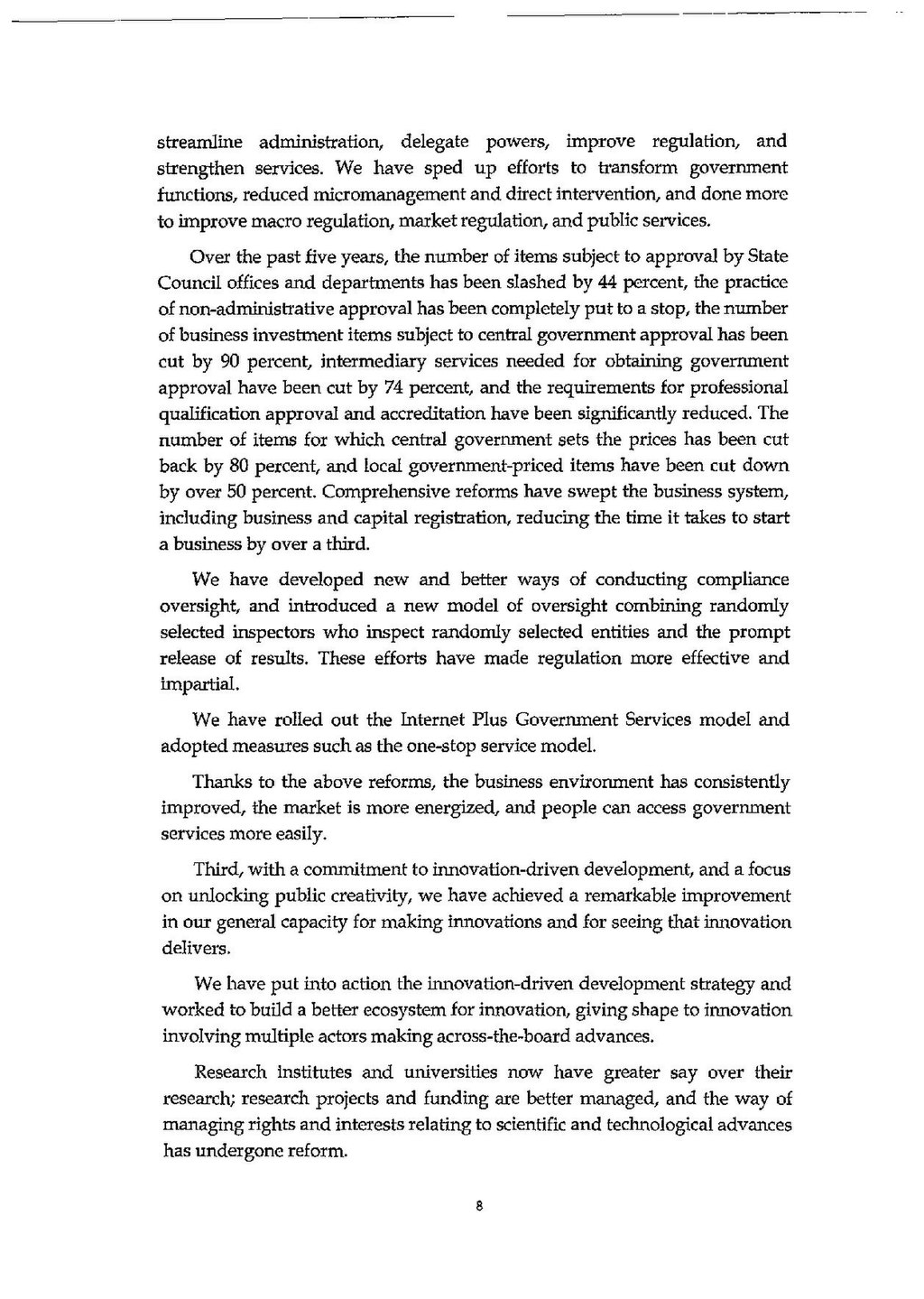streamline administration, delegate powers, improve regulation, and strengthen services. We have sped up efforts to transform government functions, reduced micromanagement and direct intervention, and done more to improve macro regulation, market regulation, and public services.
Over the past five years, the number of items subject to approval by State Council offices and departments has been slashed by 44 percent, the practice of non-administrative approval has been completely put to a stop, the number of business investment items subject to central government approval has been cut by 90 percent, intermediary services needed for obtaining government approval have been cut by 74 percent, and the requirements for professional qualification approval and accreditation have been significantly reduced. The number of items for which central government sets the prices has been cut back by 80 percent, and local government-priced items have been cut down by over 50 percent. Comprehensive reforms have swept the business system, including business and capital registration, reducing the time it takes to start a business by over a third.
We have developed new and better ways of conducting compliance oversight, and introduced a new model of oversight combining randomly selected inspectors who inspect randomly selected entities and the prompt release of results. These efforts have made regulation more effective and impartial.
We have rolled out the Internet Plus Government Services model and adopted measures such as the one-stop service model.
Thanks to the above reforms, the business environment has consistently improved, the market is more energized, and people can access government services more easily.
Third, with a commitment to innovation-driven development, and a focus on unlocking public creativity, we have achieved a remarkable improvement in our general capacity for making innovations and for seeing that innovation delivers.
We have put into action the innovation-driven development strategy and worked to build a better ecosystem for innovation, giving shape to innovation involving multiple actors making across-the-board advances.
Research institutes and universities now have greater say over their research; research projects and funding are better managed, and the way of managing rights and interests relating to scientific and technological advances has undergone reform.
8
